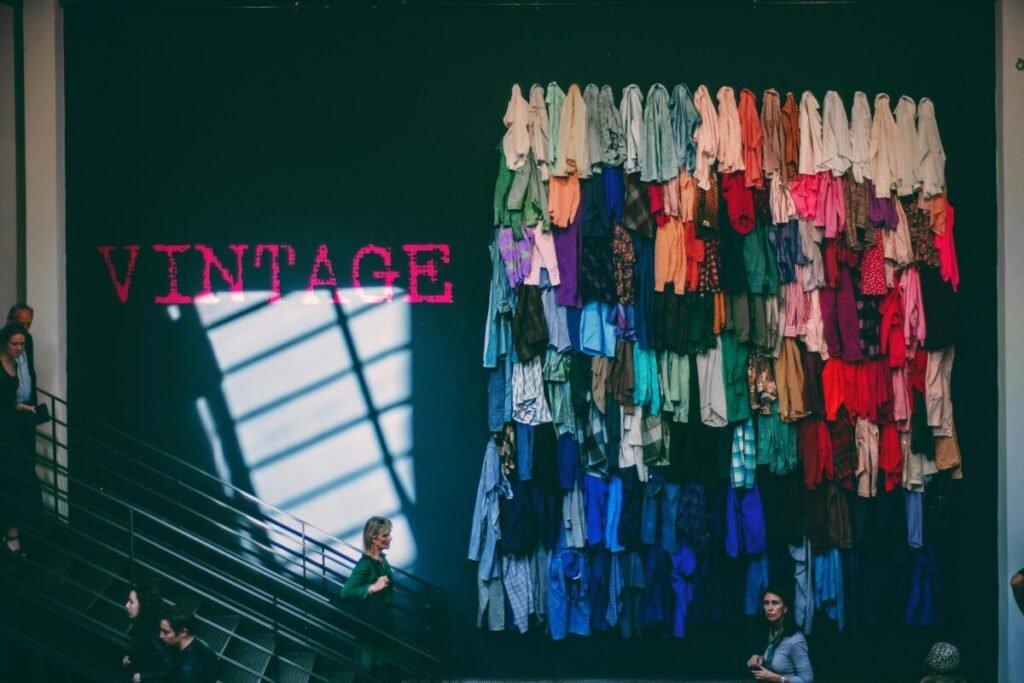Vintage fashion, decor, and collectibles have an undeniable charm. The history, the uniqueness, the quality – there’s something magical about vintage items that captivates both buyers and sellers. If you have a passion for vintage, why not turn it into a profitable business? Here’s your ultimate guide to making the leap from hobbyist to successful vintage entrepreneur.
Why Vintage?

The Allure of Vintage
Vintage items are timeless. They offer a connection to the past and a uniqueness that modern, mass-produced goods simply can’t match. People are increasingly drawn to vintage for its sustainability, craftsmanship, and the stories behind each piece. This growing interest makes it a great time to dive into the vintage business.
Benefits of Selling Vintage
- Unique Inventory: Every item has its own history and charm.
- High Demand: There’s a growing market for sustainable and unique products.
- Sustainable Business: Selling vintage promotes reuse and reduces waste.
Getting Started
Assess Your Passion and Knowledge
Before diving in, assess your passion for vintage items and your knowledge of the market. What types of vintage items are you most passionate about? Fashion, furniture, collectibles? Your enthusiasm and expertise in a specific area will set the foundation for your business.
Market Research
Conduct thorough market research to understand current trends, pricing, and demand. Explore online marketplaces, local vintage shops, and social media groups to see what’s hot and what’s not.
Create a Business Plan
A solid business plan is crucial for success. Outline your goals, target market, inventory sources, pricing strategy, and marketing plan. This plan will guide your business decisions and help you stay focused.
Sourcing Inventory
Thrift Stores and Flea Markets
Thrift stores, flea markets, and garage sales are treasure troves for vintage items. Regularly visit these places and keep an eye out for unique finds.
Estate Sales and Auctions
Estate sales and auctions can yield high-quality vintage items. Network with estate sale companies and auction houses to stay informed about upcoming sales.
Online Marketplaces
Online platforms like eBay, Etsy, and local classifieds can be great sources for vintage inventory. Set alerts for specific items and regularly check listings.
Networking
Join vintage and antique groups, both online and offline. Networking with other vintage enthusiasts can lead to valuable connections and sourcing opportunities.
Preparing Your Items for Sale
Clean and Restore
Clean and, if necessary, restore your items before listing them for sale. Be careful not to alter them too much; buyers often value the patina and signs of age.
High-Quality Photos
Take high-quality photos that showcase your items from multiple angles. Good lighting and a clean background are essential. Highlight any unique features or flaws.
Detailed Descriptions
Write detailed descriptions that include the item’s history, condition, and any notable features. Use keywords that buyers might search for, like “mid-century modern” or “vintage 90s.”
Choosing the Right Platform
Online Marketplaces
Platforms like eBay, Etsy, and Poshmark are popular for selling vintage items. Each platform has its own strengths, so choose one that aligns with your inventory and target market.
Local Marketplaces
Selling locally on platforms like Nice RVA can be beneficial. You can avoid shipping hassles and build a local customer base. Local buyers also appreciate the convenience of picking up items in person.
Social Media
Leverage social media platforms like Instagram and Facebook to reach potential buyers. Use hashtags, join vintage selling groups, and post regularly to engage with your audience.
Pricing Your Items
Research and Compare
Research similar items to determine competitive pricing. Consider factors like rarity, condition, and demand. Don’t undervalue your items, but be mindful of what buyers are willing to pay.
Offer Discounts and Bundles
Attract buyers by offering discounts for multiple purchases or bundling related items together. This strategy can help move inventory faster and increase sales.
Marketing Your Vintage Business
Build a Brand
Create a unique brand that reflects your passion for vintage. Use a memorable logo, consistent branding, and a compelling story to connect with your audience.
Social Media Marketing
Regularly post on social media to showcase your inventory, share behind-the-scenes content, and engage with followers. Use hashtags, collaborate with influencers, and run promotions to boost visibility.
Email Marketing
Build an email list to keep your customers informed about new arrivals, sales, and exclusive offers. Send regular newsletters with engaging content and attractive visuals.
SEO and Content Marketing
Optimize your online listings and website for search engines. Use relevant keywords, write blog posts about vintage trends, and share your expertise to attract organic traffic.
Providing Excellent Customer Service
Prompt Communication
Respond to inquiries quickly and professionally. Good communication builds trust and can lead to repeat customers.
Accurate Listings
Ensure your listings are accurate and honest. Misleading descriptions can lead to returns and negative reviews.
Personal Touch
Add a personal touch to your sales by including thank-you notes or small freebies with purchases. This can enhance the customer experience and encourage positive reviews.
Managing Your Finances
Keep Track of Expenses
Maintain detailed records of your expenses, including inventory costs, shipping, and marketing. This will help you understand your profitability and manage your finances effectively.
Set Profit Margins
Determine your profit margins and set pricing accordingly. Aim to cover your costs and make a reasonable profit on each sale.
Reinvest in Your Business
Reinvest a portion of your profits back into your business. This could be in the form of new inventory, marketing efforts, or improving your selling platforms.
Growing Your Business
Expand Your Inventory
As your business grows, expand your inventory to include a wider range of items. This can attract more buyers and increase sales.
Diversify Sales Channels
Don’t rely on a single platform. Explore other online marketplaces, participate in local markets and vintage fairs, and consider setting up your own e-commerce website.
Network and Collaborate
Collaborate with other vintage sellers, influencers, and local businesses. Networking can open up new opportunities and help you reach a broader audience.
Stay Updated
Stay informed about vintage trends and market changes. Regularly update your inventory and marketing strategies to stay relevant and competitive.
Embracing Sustainability
Promote Eco-Friendly Practices
Highlight the sustainability aspect of buying vintage in your marketing. Emphasize the environmental benefits of reusing and recycling.
Use Sustainable Packaging
Opt for eco-friendly packaging materials to reduce your environmental footprint. This can also appeal to environmentally conscious buyers.
Educate Your Customers
Educate your customers about the benefits of buying vintage. Share information about sustainable fashion and decor, and encourage them to make eco-friendly choices.
Conclusion
Turning your passion for vintage into a profitable venture is not only achievable but also incredibly rewarding. By understanding market trends, sourcing quality inventory, and effectively marketing your items, you can build a successful vintage business. Remember, the key to success lies in your passion, knowledge, and dedication. So start exploring, start selling, and watch your vintage hobby transform into a thriving business.
Follow us on Instagram @shop_nicerva for seller tips, featured listings, and all the Richmond vibes.
#SellLocalRichmond #NiceRVA #CommunityCommerce #SupportLocal #RichmondVA
